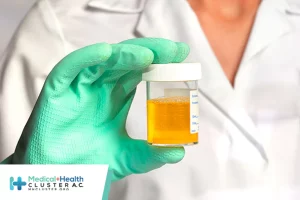CONDENA MH CLÚSTER ATAQUE ARMADO A HOSPITAL ARCÁNGELES
Leer más
Effect of Sotrovimab on Hospitalization or Death Among High-risk Patients With Mild to Moderate COVID-19

Question Among patients at risk of disease progression, does early treatment of mild to moderate COVID-19 with the neutralizing antibody sotrovimab prevent progression to severe disease?
Findings In this randomized clinical trial of 1057 participants, treatment with a single intravenous dose of sotrovimab, compared with placebo, resulted in a statistically significant reduction in the proportion of patients who experienced a composite outcome of all-cause hospitalization lasting longer than 24 hours or death through day 29 (1% vs 6%, respectively; adjusted relative risk, 0.21).
Meaning Findings support sotrovimab as a treatment option for nonhospitalized, high-risk patients with mild to moderate COVID-19, although efficacy against SARS-CoV-2 variants that have emerged since the study was completed is unknown.
Importance Older patients and those with comorbidities who are infected with SARS-CoV-2 may be at increased risk of hospitalization and death. Sotrovimab is a neutralizing antibody for the treatment of high-risk patients to prevent COVID-19 progression.
Objective To evaluate the efficacy and adverse events of sotrovimab in preventing progression of mild to moderate COVID-19 to severe disease.
Design, Setting, and Participants Randomized clinical trial including 1057 nonhospitalized patients with symptomatic, mild to moderate COVID-19 and at least 1 risk factor for progression conducted at 57 sites in Brazil, Canada, Peru, Spain, and the US from August 27, 2020, through March 11, 2021; follow-up data were collected through April 8, 2021.
Interventions Patients were randomized (1:1) to an intravenous infusion with 500 mg of sotrovimab (n = 528) or placebo (n = 529).
Main Outcomes and Measures The primary outcome was the proportion of patients with COVID-19 progression through day 29 (all-cause hospitalization lasting >24 hours for acute illness management or death); 5 secondary outcomes were tested in hierarchal order, including a composite of all-cause emergency department (ED) visit, hospitalization of any duration for acute illness management, or death through day 29 and progression to severe or critical respiratory COVID-19 requiring supplemental oxygen or mechanical ventilation.
Results Enrollment was stopped early for efficacy at the prespecified interim analysis. Among 1057 patients randomized (median age, 53 years [IQR, 42-62], 20% were ≥65 years of age, and 65% Latinx), the median duration of follow-up was 103 days for sotrovimab and 102 days for placebo. All-cause hospitalization lasting longer than 24 hours or death was significantly reduced with sotrovimab (6/528 [1%]) vs placebo (30/529 [6%]) (adjusted relative risk [RR], 0.21 [95% CI, 0.09 to 0.50]; absolute difference, –4.53% [95% CI, –6.70% to –2.37%]; P < .001). Four of the 5 secondary outcomes were statistically significant in favor of sotrovimab, including reduced ED visit, hospitalization, or death (13/528 [2%] for sotrovimab vs 39/529 [7%] for placebo; adjusted RR, 0.34 [95% CI, 0.19 to 0.63]; absolute difference, –4.91% [95% CI, –7.50% to –2.32%]; P < .001) and progression to severe or critical respiratory COVID-19 (7/528 [1%] for sotrovimab vs 28/529 [5%] for placebo; adjusted RR, 0.26 [95% CI, 0.12 to 0.59]; absolute difference, –3.97% [95% CI, –6.11% to –1.82%]; P = .002). Adverse events were infrequent and similar between treatment groups (22% for sotrovimab vs 23% for placebo); the most common events were diarrhea with sotrovimab (n = 8; 2%) and COVID-19 pneumonia with placebo (n = 22; 4%).
Conclusions and Relevance Among nonhospitalized patients with mild to moderate COVID-19 and at risk of disease progression, a single intravenous dose of sotrovimab, compared with placebo, significantly reduced the risk of a composite end point of all-cause hospitalization or death through day 29. The findings support sotrovimab as a treatment option for nonhospitalized, high-risk patients with mild to moderate COVID-19, although efficacy against SARS-CoV-2 variants that have emerged since the study was completed is unknown.
Trial Registration ClinicalTrials.gov Identifier: NCT04545060
As of January 2022, more than 5.4 million people worldwide have died from COVID-19.1 The most common serious manifestations of COVID-19 are respiratory failure and acute respiratory distress syndrome, but diverse effects have been observed in other organ systems.2 Patient characteristics associated with a greater risk of severe COVID-19 include older age, obesity, and chronic kidney disease.3
Since its identification, mutations in the SARS-CoV-2 spike gene have resulted in the global spread of variants of concern that may increase transmissibility and disease severity while decreasing response to vaccines and treatment options.4,5 Recently, B.1.617.2 (Delta) and B1.1.529 (Omicron) have emerged as the leading variants of concern, with increased transmissibility and immune evasion, including vaccine breakthrough infections.4 Effective therapies are needed because of these mutations, limited vaccine availability, and vaccine hesitancy to provide a high barrier against viral escape and enduring coverage.6 In the US, current treatment guidelines for outpatients with mild to moderate COVID-19 who are at high risk for clinical progression recommend monoclonal antibody treatment.6
Sotrovimab is an Fc-engineered human monoclonal antibody that contains the LS modification to enhance half-life and respiratory mucosal delivery.7,8 In contrast to other monoclonal antibodies,9 sotrovimab targets a highly conserved epitope in the SARS-CoV-2 spike protein at a region that does not compete with binding of the angiotensin-converting enzyme 2.10,11 In addition to neutralizing SARS-CoV-2, sotrovimab has demonstrated effector functions in vitro that may contribute to immune-mediated viral clearance.7,12 Data also suggest that sotrovimab may prevent cell-cell fusion (ie, syncytia formation) unlike other antibodies that target the receptor-binding domain.13
The COVID-19 Monoclonal Antibody Efficacy Trial–Intent to Care Early (COMET-ICE) evaluated the efficacy and tolerability of sotrovimab administered intravenously in high-risk patients with mild to moderate COVID-19. The results from a preplanned interim analysis were recently published.14 The full results of this trial through the primary outcome at day 29 are presented here.
The early treatment of mild to moderate COVID-19 with sotrovimab was assessed in this phase 3, double-blind, placebo-controlled, multicenter randomized clinical trial. There were 57 participating centers (6 sites in Brazil; 2 sites in Canada; 1 site in Peru; 3 sites in Spain; and 45 sites in the US). The protocol and statistical analysis plan, including changes made after trial commencement, appear in Supplement 1. The study was conducted in accordance with the principles of the Declaration of Helsinki and the Council for International Organizations of Medical Sciences international ethical guidelines, applicable Good Clinical Practice guidelines from the International Council for Harmonisation, and applicable laws and regulations. Ethics approval was obtained from institutional review boards and ethics committees at all participating sites. All patients or their representatives provided written informed consent, and the appropriate institutional forms were archived.
Eligible patients were aged 18 years or older, tested positive for SARS-CoV-2 by reverse transcriptase–polymerase chain reaction (RT-PCR) test or an antigen test, and had symptom onset within the prior 5 days. The study population represented patients at high risk for COVID-19 progression requiring hospitalization or death. As such, patients were required to have at least 1 of the following risk factors: age of 55 years or older, diabetes requiring medication, obesity (body mass index >30; calculated as weight in kilograms divided by height in meters squared), chronic kidney disease (estimated glomerular filtration rate <60 mL/min/1.73 m2),15 congestive heart failure (≥New York Heart Association class II), chronic obstructive pulmonary disease, or moderate to severe asthma.16 Patients were excluded if they were hospitalized or if they had signs or symptoms of severe COVID-19 (shortness of breath at rest, oxygen saturation level <94%, or required supplemental oxygen).
Race and ethnicity were collected for regulatory reporting purposes and were self-reported by the patients from a predefined list of racial and ethnic categories. If a patient identified as multiracial, the terms mixed White race, mixed Asian race, or mixed race were used in accordance with regulatory guidance.
Eligibility screening was performed within 24 hours before study drug administration. Using an interactive web response system, eligible patients were randomized 1:1 to receive a single intravenous infusion with 500 mg of sotrovimab or an equal volume of saline placebo over 1 hour on day 1. Patients were observed for approximately 2 hours after the infusion. Randomization was stratified by age (≤70 years vs >70 years), duration of COVID-19 symptoms (≤3 days vs 4-5 days), and region (North America vs South America vs Europe) and based on a block size of 6. Participants and investigators (and treatment administrators) were all blinded to treatment allocation.
The primary efficacy outcome was the proportion of patients with COVID-19 progression through day 29 (defined as all-cause hospitalization lasting >24 hours for acute illness management or death due to any cause). To capture clinical events that may not have required prolonged hospitalization but were potentially clinically relevant, a secondary composite outcome of the proportion of patients with all-cause emergency department visit, hospitalization of any duration for acute illness management, or death due to any cause through day 29 was measured.
Additional prespecified clinical secondary outcomes included the proportion of patients with progression to severe or critical respiratory COVID-19 requiring supplemental oxygen (severe disease) or mechanical ventilation (critical disease) through day 29 and all-cause mortality at day 29. Symptom severity and duration were measured using the COVID-19–adapted version of the Influenza Patient-Reported Outcome Plus (FLU-PRO Plus) questionnaire and assessed as mean change in total score (an average of responses from the 32-item questionnaire; scores range from 0 [symptom-free] to 4 [very severe symptoms]) from baseline through day 7 (additional information on the FLU-PRO Plus questionnaire appears in the eMethods in Supplement 2).17 There is no established minimal clinically important difference for the FLU-PRO Plus questionnaire in a population with COVID-19. Changes from baseline to day 8 in viral load (in nasal secretions) were determined by quantitative RT-PCR test.
Créditos: Comité científico Covid




